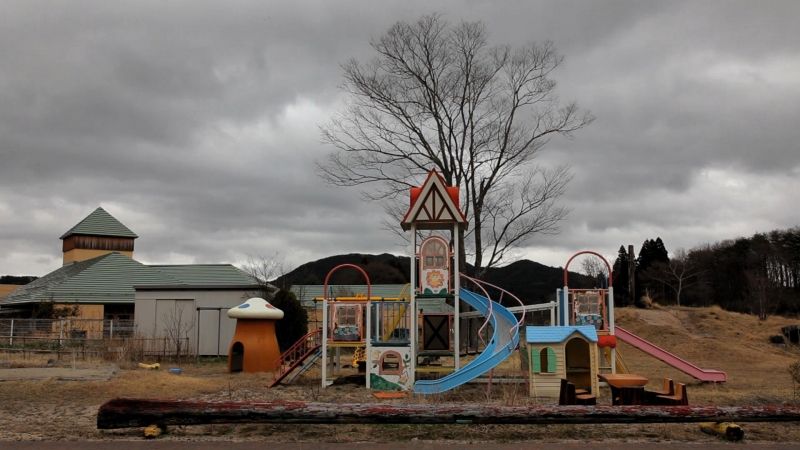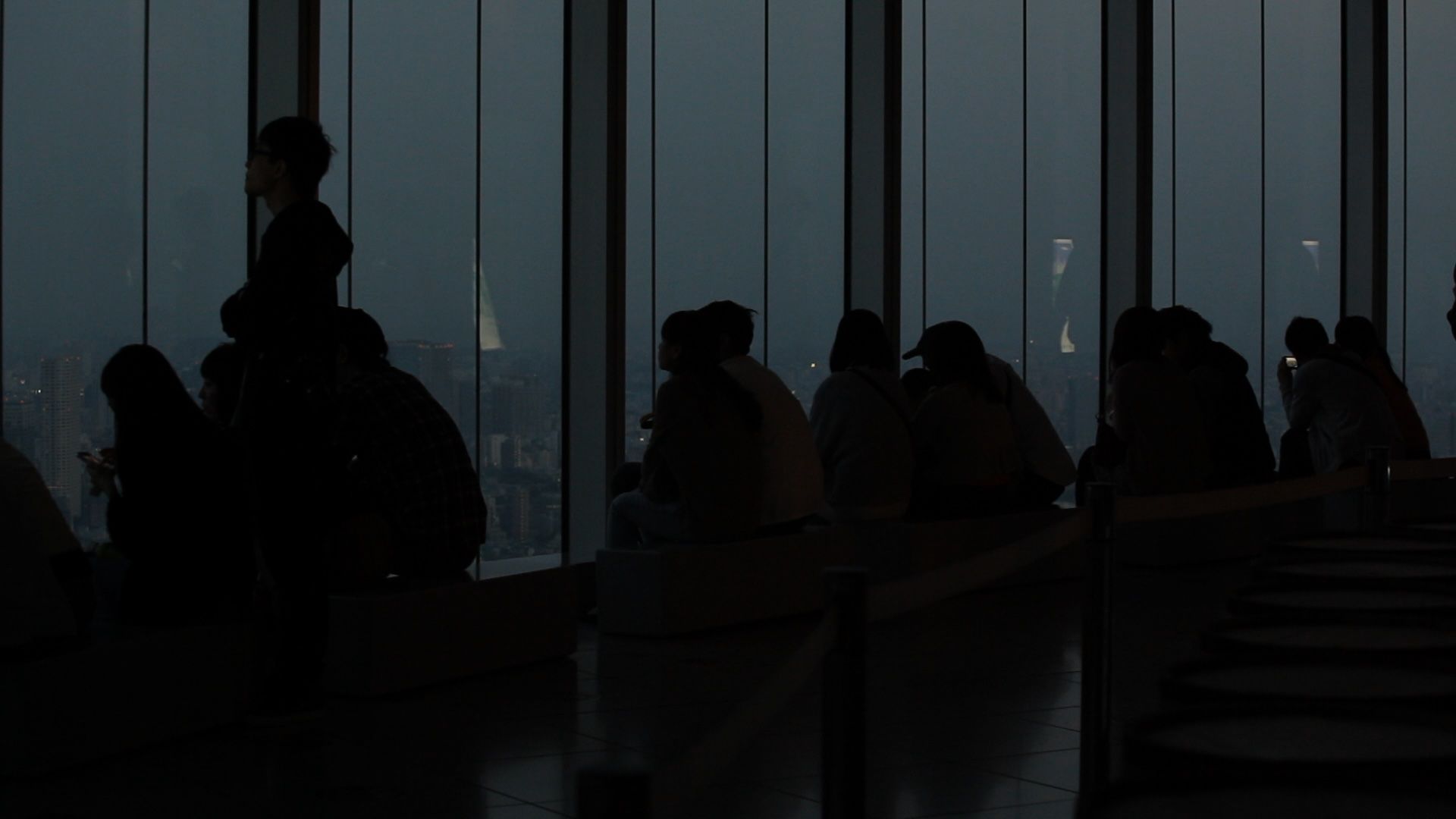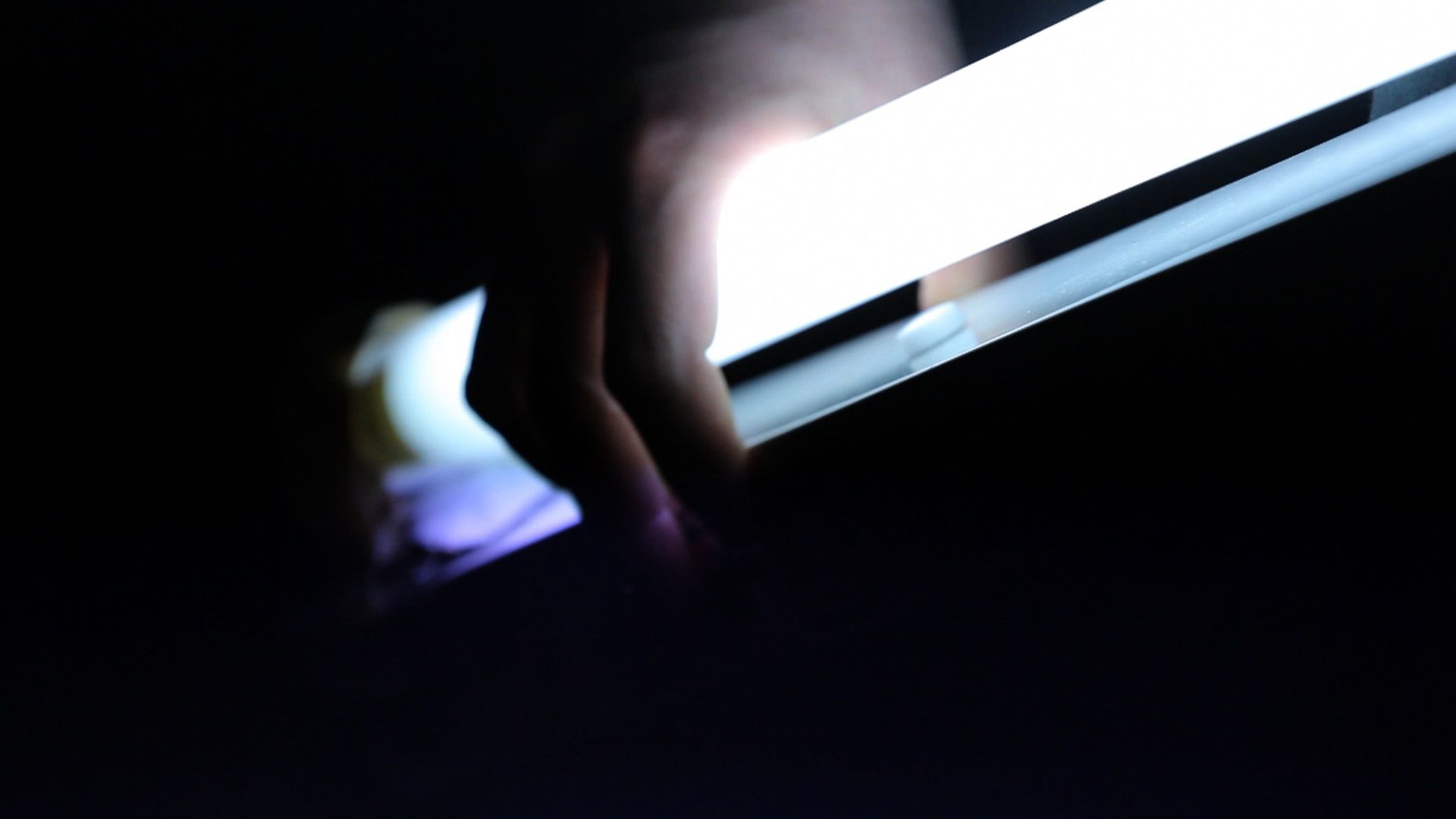The Radiant explores the aftermath of March 11, 2011, when the Tohoku earthquake triggered a tsunami that killed many thousands and caused the partial meltdown of the Fukushima Daiichi nuclear power plant on the east coast of Japan. A film essay burdened by the difficult task of representing the invisible aftermath of nuclear fallout, The Radiant travels through time and space to invoke the historical promises of nuclear energy and the threats of radiation that converge in Japan's illuminated cities and evacuated villages in the months immediately following the disasters. The Otolith Group's cinematic document offers glimpses into the shape and presence of an unseen entity and its abstract manifestation through visual phenomena. "The Anthropocene gives us a different time frame to understand the relations between scientific processes – whether those are atmospheric or geological – and human time. The Radiant (2012) is trying to link the two together but in a way that is not illustrative and didactic. It is suggesting through montage that there is a longer time frame. By making a link between 2011 and 1970, 1954, 1945 with the reconstruction of Tokyo after World War II in the opening sequence, we’re trying to say that the specific catastrophe of 3.11 is linked to the broader question of nuclearity in an anthropogenic context. 1954 is when you have black rain falling over Tokyo; it’s when the anti-nuclear movement comes in. Nobody would have used the term 'anthropogenist' in 1954 but now we can see that that’s what it was: the beginning of an awareness of the climactic changes and environmental dangers." The Radiant unveils the unspoken forms of power and identification with energy that atomic power illicits, wherein an entire project of nuclear power can be seen as a Promethean endeavour in which science and technology gain control over fundamental processes of chain reactions for supposedly the good of humanity.
The last person to attribute this kind of Promethean dimension to nuclear power was the philosopher Günther Anders, Hannah Arendt’s first husband, who in the 1950s wrote The Antiquatedness of the Human Species. The Radiant are those people who feel themselves to be all-powerful because of their identification with the power of the nuclear. The Radiant is Japan itself, and within that, Tokyo, the City of Light that you see early on in the film in an overhead shot from the 52nd floor of the Mori Tower. Tokyo is something like the evil twin of Fukushima, way up there on the north-east – a provincial, local, old-fashioned town that Tokyo people are somewhat dismissive of. It’s also an extremely animistic region. The Honshu coast, and Fukushima within that, holds on to the beliefs in an invisible layer of local gods, household gods, gods of sea, rain, soil, whom different households pay tribute to. The curator, photographer and theorist of photography Chihiro Minato – who also appears in the essay film The Life of Particles (2013) by Angela Melitopoulos and Maurizio Lazzarato – says that radiation adds a second level of invisibility to that of local gods, which creates what he calls ‘a double invisible landscape. When you go there your camera is useless. It cannot perceive any of these dimensions. This is why we have this sequence where the camera is being dismantled. It is a demonstration of the limits and impotence of the camera. The film is like a gathering together of different attempts to make sense of something insensible but which must be grasped, whether through visual, sonic or tactile means. We realized that the Geiger counter sounds used to measure different levels of local radiation can combine with bird sound, a kind of trilling, trebling sound. The Geiger counter is not just a sound; it’s a reading. It’s a sonic guide, which is maybe better than a camera. A camera can’t see hotspots but a Geiger counter can read the points where radiation connects – in drains, in gutters, in the points where water is stagnant. It’s where radiation is most intense and dangerous. A lot of Fukushima looks quite banal and overgrown; it doesn’t look like a terrifying catastrophe has happened. Minato calls this the “anti-ruin”. That’s because radiation doesn’t have a visual presence, unlike an earthquake. And so the sonic descriptions are more useful. In a sense the visual is blocking a lot of the understanding." Kodwo Eshun and Anjalika Sagar
64.14 mins HD Video, Colour, Sound,Stereo
Commissioned as part of dOCUMENTA (13) with generous support from Project 88.




